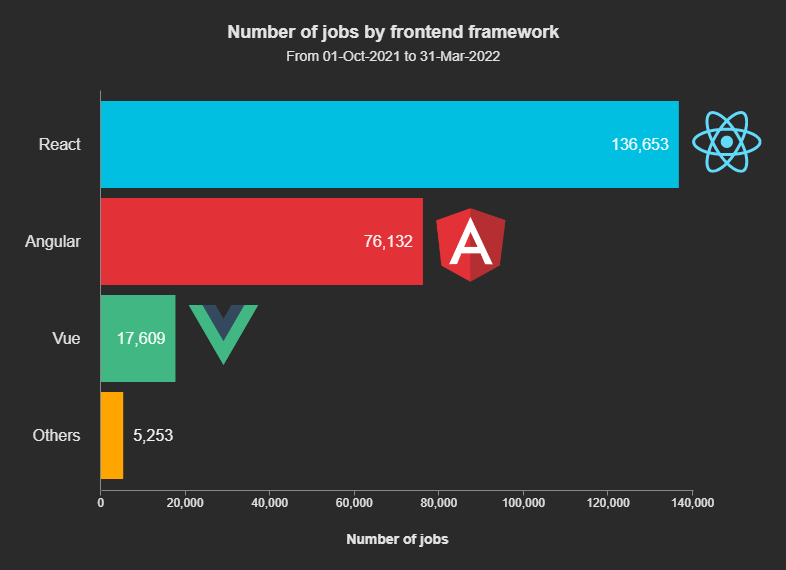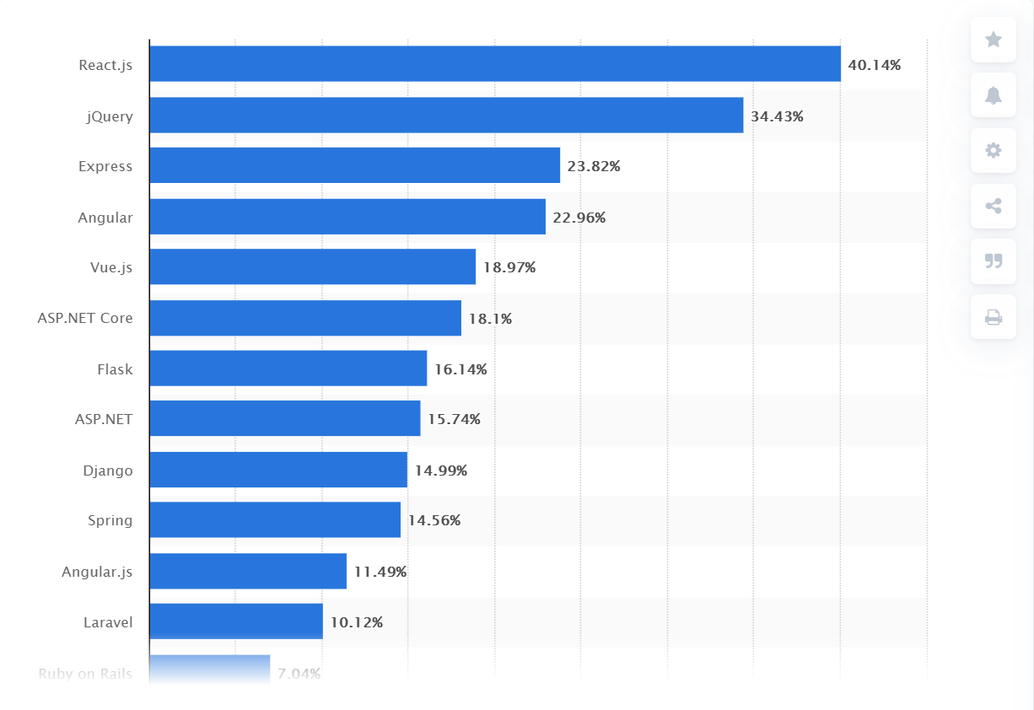Angular and React are popular JavaScript libraries for building user interfaces (UIs) for web applications. While they share some similarities, there are also several key differences between them.
Now let’s compare the similarities and differences between these two technologies.
Differences between Angular and React
In terms of structure, Angular and React differ significantly.
Angular is a full-fledged framework, which means it comes with a full set of tools and features for developing web applications. This includes tools for routing, state management, and form handling, among others. React, on the other hand, is a library that focuses specifically on building UIs. It does not provide as many features out of the box as Angular, but it can be used in conjunction with other libraries to build a complete web application.
Another relevant difference between Angular and React is how they are used to create components. In Angular, components are defined using TypeScript classes and decorators. This makes it easy to define complex components but can also make the code more verbose and difficult to read.
React, on the other hand, uses a JSX syntax, which allows components to be defined using a mixture of JavaScript and HTML.
This can make the code more concise and easier to read, but can also be more difficult to understand for developers who are not familiar with it.

Number of jobs by front-end framework
React generally has a faster performance than Angular. This is because React uses a virtual DOM, which allows it to update only the parts of the UI that have changed, rather than re-rendering the entire UI each time there is a change. Angular, on the other hand, re-renders the entire UI each time there is a change, which can be slower.
Conclusion
Overall, the choice between Angular and React will depend on the specific needs and preferences of the development team. Angular is a complete framework that can be used to build a wide range of web applications but may require more time and effort to learn and use. React, on the other hand, is focused specifically on building UIs and can be faster, but may require the use of additional libraries to build a complete web application.
Similarities between Angular and React
One of the main similarities between Angular and React is that they are both component-based. This means that they both use a modular approach to building UIs, where the interface is divided into smaller, reusable components. This makes it easier to build and maintain complex UIs, as well as to reuse components across different parts of the application.
One more similarity between Angular and React is that they both use a virtual DOM. A virtual DOM is a JavaScript representation of the actual DOM, which is the structure of the HTML elements in a web page.
By using a virtual DOM, both Angular and React can update the UI more efficiently, only re-rendering the parts of the UI that have changed, rather than re-rendering the entire UI each time there is a change.
A large and active developer community supports both Angular and React. This means that there are many resources available, such as tutorials, documentation, and third-party libraries, to help developers learn and use these libraries. This can make it easier to get started with Angular or React and to find solutions to common problems.
Though Angular and React have unique features and differences, they both provide powerful tools for building web applications.
Which companies use Angular and React
React and Angular are open-source and maintain a large and active community of contributors. This means that there is a wealth of resources and support available for developers who are using these libraries.
They are both very powerful and efficient tools for building complex and dynamic user interfaces. They both offer a wide range of features and capabilities that make it easier for developers to create engaging and interactive web applications.

Top Web Development Frameworks In 2021-2022
There is no surprise, that Angular and React are popular choices for companies. Powerful, efficient, and widely supported, make these two valuable tools for building modern web applications.
React
Some examples of well-known companies that use React technology include Facebook, Airbnb, Netflix, and Dropbox. These companies use React to build scalable and performant UIs for their web applications. Therefore, they can take advantage of its virtual DOM and other features. Many other companies also use React, ranging from small startups to large enterprises.
Angular
Here are some examples of well-known companies that use Angular: Google, Microsoft, Forbes, and Upwork. These companies work with Angular to build complex and feature-rich web applications, taking advantage of its powerful tools and features. The use of Angular is widespread, from small startups to large organizations.




